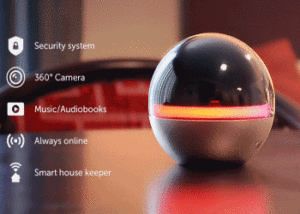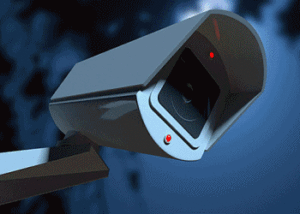Access Control Systems Miami Beach Coral Gables

Access Control Systems Miami Beach Coral Gables, Introduction to Access Control Systems. What is an Access Control System? , Simply defined, the term “access control” describes any technique used to control passage into or out of any area. Additionally, the standard lock that uses a brass key is a simple form of an “access control system”.
Over the years, access control systems have become more and more sophisticated. Today, the term “access control system” most often refers to a computer-based, electronic card access control system. Futhermore, the electronic card access control system uses a special “access card”, rather than a brass key, to permit access into the secured area.
Access control system
Furthermore, the term “access control system” refers to an electronic card access control system. Access control systems are most common to control the entry into exterior doors of buildings. Consequently, Access control systems control access to certain areas within the interior of buildings.
The purpose of an access control system is to provide quick, convenient access to those persons who are authorized, while at the same time, restricting access to unauthorized people.
Basic Components of an Access Control System
Access control systems vary widely in type and complexity. However, most card access control systems consist of at least the following basic components:
Access Cards
The access card may be thought of as an electronic “key”. Additionally, the access card is used by persons to gain access through the doors secured by the access control system. Therefore, Each access card is uniquely encoded. Most access cards are approximately the same size as a standard credit card, and can easily be carried in a wallet or purse.
Card Readers

Card readers are the devices used to electronically “read” the access card. Furthermore, card readers may be of the “insertion” type (which require insertion of the card into the reader) or may be of the “proximity” type (which only require that the card is held in a 3″ to 6″ proximity of the reader. Additionally, card readers are usually mounted on the exterior (non-secured) side of the door that they control.
Access Control Server Computer
The access control server computer is the “brain” of the access control system. Additionally; the access control server computer serves as the central database and file manager for the access control system; and is responsible for recording system activity, and distributing information to and from the access control field panels.
Normally, a single access control server computer can be used to control a large number of card reader controlled doors. Furthermore, the access control server computer is usually a standard computer which runs special access control system application software. In most all cases, the computer is for full-time use with the access control system.
A Simple Access Control System
To explain the concept of a simple access control system, we will use a fictitious building, called the “Administration Building”, as an example.
The management of the Administration Building has decided to install an access control system to improve security conditions at the building. Mary Simpson, the “security coordinator” for the building, has been assigned responsibility for implementing and managing the access control system.
There are two primary entrance doors to the Administration Building; one at each end of the building. Mary wants to control access through each of these doors.
There is a computer room on the First Floor of the Administration Building.
A single door leads from the main hallway into the computer room. Because of the sensitive nature of the equipment in the computer room, Mary wants to control access through this door.
Mary contacts the access control vendor to arrange for the installation of her system. The vendor, working with Mary, determines that three card readers will work: one at the front building entrance door, one at the back building entrance door, and one at the door to the computer room. Mary decides to use insertion type card readers without keypads.
In addition to the card readers, each of the controlled doors will require the installation of electric lock hardware.
A survey of the doors indicates the use of standard electric door strikes.
To operate the three card readers at the Administration Building, you need one access control field panel. Mary decides to have this panel in a telephone closet that is central within the building. Wiring will exist between each of the card reader controlled doors and the access control field panel.
The vendor recommends that the Administration Building install a stand-alone access control server computer to operate the control system. Because Mary will be responsible for managing the access control system, she decides to locate the access control server computer in her office. Mary makes arrangements with the vendor for the purchase of the system, and schedules to have the installation begin.
Access Control System Set-up and Operation
The vendor has completed the installation of the access control system at the Administration Building.
Mary, as security coordinator, will have day-to-day responsibility for managing the system. Before the system can be put into use, Mary must set-up or “define” the access control system software.
Set-up of the access control software initializes at the host computer. Set-up of the software involves setting various access control system parameters to meet the specific requirements of the building in which the system is installed.
Mary has already issued access cards to each of the tenants who will have access to the Administration Building. The first step in setting up the access control system is to “validate” each of the access cards. To validate the access cards, Mary must tell the access control system at what doors each of the cards can be used, and at what times.
The access control system allows a great deal of flexibility in “tailoring” the access privileges assigned to each card:
Doors: The system can allow the card to work at all card reader controlled doors, or only at specific doors.
Time of Day: The system can allow the card to work 24 hours per day; or only during certain time periods (7:00 P.M.- 12:00 P.M. only, for example)
Day of Week: The system can allow the card to work seven days per week, or only on certain days (Monday, Wednesday, and Friday only, for example.)
Holidays: The system can allow the card to work differently on days defined as holidays.
Start and Stop Dates: The system can allow the card to only work during certain defined ranges of time (June 1 through June 15, for example.)
Access Control Keypads
Access control keypads are devices in addition to or in place of card readers. The access control keypad has numeric keys which look similar to the keys on a touch-tone telephone.
The access control keypad requires that a person desiring to gain access enter a correct numeric code. Furthermore, when access control keypads work with card readers; both a valid card and the correct code must present before allowing entry. Where access control keypads work in place of card readers, only a correct code can gain entry.
Electric Lock Hardware
Electric lock hardware is the equipment that electrically locks and unlocks each door; and that is the access control system controls.
There are a wide variety of different types of electric lock hardware. These types include electric locks, electric strikes, electromagnetic locks, electric exit devices, and many others. The specific type and arrangement of hardware to be used on each door is determined based on the construction conditions at the door.
In almost all cases, the electric lock hardware controls entrance into a building or space. To comply with building and fire codes, the electric lock hardware never restricts the ability to freely exit the building at any time.
Access Control Field Panels
Access control field panels (“Intelligent Controllers”) are in each building where access control. Card readers, electric lock hardware, and other access control devices have a connection to the access control field panels.
The access control field panels process access control activity at the building level. The number of access control field panels in each building depends on the number of doors that need controlling. Access control field panels are usually in telephone, electrical, or communications closets.
Mary sits down in front of the access control server computer and begins to validate each of the access cards. Here are several examples of the different access card privileges that Mary will assign:
Sally Strong:
Sally is a regular office worker at the Administration Building. Additionally, Sally normally works Monday through Friday, 8:00 A.M. to 5:00 P.M.
Mary assigns privileges to Sally’s card to allow access Monday through Friday, 7:00 A.M. to 6:00 P.M. at the building entrance doors. Sally does not require access to the computer room, so her card does not allow access through that door.
Susan Bright:
Susan is also a regular office worker at the Administration Building. Sally normally works Monday through Friday, 8:00 A.M. to 5:00 P.M. Every Wednesday afternoon, Susan substitutes for a computer operator who works in the computer room.
Mary assigns privileges to Susan’s card to allow access Monday through Friday, 7:00 A.M. to 6:00 P.M. at the building entrance doors. In addition, Susan’s card is also allows access to the computer room door from 11:00 A.M. to 5:00 P.M. on Wednesdays only.
John Smith:
John is the manager of computer operations and requires seven days a week, 24 hours per day access to all doors of the Administration Building, including the computer room.
Mary assigns privileges to John’s card to allow 24 hours per day, 365 days per year access through all doors.
Bill Nelson:
Bill is a part-time worker that comes into work only on Monday and Tuesday nights.
Mary assigns privileges to Bill’s card that allows access Monday and Tuesday, 5:00 P.M. to 11:00 P.M., at the building entrance doors to the Administration Building. Furthermore, Bill does not work in the computer room, so his card will never allow access through that door.
Mike Able:
Mike is a technician for a computer company. Furthermore, Mike is working on a computer installation in the Administration Building computer room. The computer installation is expected to begin on June 1st and is expected to be completed by June 15th. Mary assigns Mike’s card access privileges for the computer room door, Monday through Friday, 8:00 A.M. to 5:00 P.M. Mike’s access privileges will begin on June 1, and will automatically expire on June 15.
As Mary begins to validate each of the access cards, she soon realizes that many of the cards in her system will receive identical access privileges. For example, all of the regular office workers will have the same access privileges as Sally Strong.
To save time, the access control software allows the creation of “clearance codes”.
Clearance codes are pre-defined sets of access privileges. Furthermore; once someone creates a clearance code, they can assign it to any number of access cards. Additionally, Clearance codes can have a name. Usually, this name is a short description that corresponds with the intended use of the clearance code.
For example, Mary might create a clearance code and name it “Regular Office”. Therefore, she would set this clearance code to allow access Monday through Friday, 7:00 A.M. to 6:00 P.M. at the building entrance doors.
When validating Sally Strong’s card, Mary would simply assign it the clearance code “Regular Office”. This would give Sally exactly the access privileges that she needs. Furthermore, all of the other office workers who need access privileges identical to Sally’s would also be assigned the “Regular Office” clearance code.
Mary will create several clearance codes corresponding to the various categories of tenants that have access to the Administration Building.
Validating each of the access cards requires at least three entries: the access card number, the cardholder’s name, and at least one clearance code. The use of standard clearance codes will allow Mary to validate a large number of access cards in a short period of time.
Mary finishes entering the information for all of the access cards, and the access control system at the Administration Building is now ready for use.
Mary makes arrangements to conduct orientation sessions for all tenants of the building and establishes a date when the access control system will be placed into service.
Using the access card is simple.
To enter the building, the user simply inserts his card into the slot, allowing the card to be “read” by the card reader.
The card reader instantly sends the card’s identity number to the access control field panel, which verifies that the card is valid at that door at that time. If the card is valid, the field panel immediately sends a signal to unlock the electric strike at the door, allowing the user to enter.
The time between card insertion and door unlock is usually one second or less. In addition to unlocking the door, the access control field panel also sends a “valid access” transaction record to the server computer for storage. The valid access transaction record indicates the name assigned to the card, the name of the door that was entered, and the time that entry occurred.
Sometimes, a user may attempt to use his card at the wrong door; or at the wrong time.
For example, if Bill Nelson (the part-time worker that works Monday and Tuesday) attempts to use his card to enter on Friday; Therefore, the access control system will not be grant him entry.
When a user attempts to use his card incorrectly, the access control field panel will declare an “invalid access attempt”. A transaction record of all invalid access attempts will go to the access control server computer for storage. The transaction record indicates the name of the cardholder, the name of the door, the reason for rejection (wrong time, wrong door, etc.), and the time of the entry attempt.
Door Status Monitoring Feature
For the access control system at the Administration Building to work successfully, it is important that the card reader controlled doors to be used as intended.
To prevent misuse, the access control system provides a “door status monitoring” feature at each of the card reader controlled doors. The door status monitoring feature provides two important functions:
“Door-Forced-Open” Monitoring:
In the event that any card reader door is opened from outside without the use of a valid access card, the system will cause a “Door-Forced-Open” (DFO) condition to occur.
“Door-Open-Too-Long” Monitoring:
In the event that someone opens any card reader door; the system will cause a “Door-Open-Too-Long” (OTL) condition to occur.
Therefore, the access control system at the Administration Building has a design to sound an audible alarm inside the building; when either a DFO or OTL condition occurs at any card reader controlled door.
In addition, a transaction record of all DFO and OTL conditions is sent to the access control server computer for storage. The transaction record indicates the name of the door at which the condition occurred, the type of event that occurred (DFO or OTL), and the time that the condition occurred.
Actual actions…
The actual actions that occur upon a DFO or OTL condition at the Administration Building can be set at the access control server computer by the security coordinator, Mary Simpson, on a door by door basis. The access control software allows Mary to define the time periods during which the DFO and OTL monitoring functions will be in effect.
For example, Mary may decide that it would be O.K. for the back door of the Administration Building to be open during regular working hours (8:00 A.M. to 5:00 P.M., Monday through Friday) to permit the loading and unloading of furniture.
Mary does not want the back door to be open at any time other than regular working hours.
To accomplish this, Mary sits at the access control server computer and enters the time periods during which she does want DFO and OTL monitoring functions to be in effect; in this case, 5:00 P.M. to 8:00 A.M. Monday through Friday, and 24 hours per day on Saturday, Sunday and Holidays.
Additionally; if the back door to the Administration Building is open during normal working hours, nothing will happen. However, if the door is open during the evening or on weekends, the audible alarm will sound.
Automatic Unlock Feature
The access control system allows each card reader controlled door to be “automatically unlocked” during certain time periods if desired. An automatically unlocked door can open without requiring the use of an access card.
Furthermore, you can set the automatic unlocking feature to the access control server computer on a door by door basis.
For example, the management of the Administration Building has decided that the front door of the building should remain open to the public during regular working hours (8:00 A.M. to 5:00 P.M., Monday through Friday).
Additionally…
Mary Simpson, the security coordinator, configures the access control system software to automatically unlock the front door at 8:00 A.M., and to automatically re-lock the front door at 5:00 P.M., Monday through Friday, excluding holidays.
Each weekday, the front door of the Administration Building will automatically unlock at 8:00 A.M., allowing free entrance into the building. At 5:00 P.M. the front door automatically relocks. Persons desiring entry into the building after 5:00 P.M. must use their access card. Door status monitoring (DFO and OTL) features are automatically disabled at a card reader controlled door that has been automatically unlocked by the system.
Reporting Features
The access control system automatically records various types of system “transactions” on the access control server computer’s hard disk. The collection of these transactions is the “system journal”. The system journal is simply a computer database that stores records of access control transactions.
There are many different types of access control system transactions. Some of the more common types of transactions include:
Valid Access: An entry through a door using a valid access card.
Invalid Access Attempt: An attempt to use an access card at the wrong door or at the wrong time.
Door-Forced-Open (DFO) Condition: A door opened from the outside without the use of a valid access card.
Door-Open-Too-Long (OTL) Condition: A door propped open.
Equipment Failure Condition: Failure of a portion of the access control system or its related wiring.
Power Failure Condition: Loss of primary power to the access control system.
The system journal can normally store several months’ worth of transactions, depending on the volume of activity generated at the building, and the size of the computer’s hard disk.
The access control system allows the creation of reports of various types of system transactions. Furthermore; The access control server computer creates these reports; and it displays it on the screen, or prints on a computer printer.
Reports depend on a set of parameters that the person managing the access control system defines. Some of these parameters can include:
Specific types of transactions
Specific ranges of time
Ranges of dates
Specific doors
Specific access cards
The flexible nature of the reporting feature allows the person managing the access control to custom-tailor a report to meet their specific needs.
Day-To-Day Operations
The following are some day-to-day operations that Mary Simpson, as manager of the access control system at the Administration Building, is likely to encounter:
Card Doesn’t Work
Situation: Susan Bright attempts to use her card to get into the computer room this Wednesday. Her card does not allow access to the computer room as it should. Her card works fine at the building entrance doors. Furthermore, this is the first time that Susan has tried to use her card at the computer room door since the installation of the access control system. Therefore, Susan tells Mary that her card doesn’t work.
Action: Mary checks the clearance code assigned to the card, and finds that she inadvertently assigned the wrong code. Mary reassigns the correct clearance code, and the card now works fine.
Lost Access Card
Situation: Sally Strong has lost her wallet which contains her access card. Sally tells Mary that her access card is lost.
Action: Mary immediately invalidates (cancels) Sally’s lost access card. Mary gives Sally a new access card and validates it using the appropriate clearance code.
Change of Access Privilege
Situation: Bill Nelson, who previously only worked part-time, will become a full-time regular employee next week. Bill’s supervisor asks Mary to upgrade Bill’s card to permit access during regular work hours.
Action: Mary changes the clearance code assigned to Bill’s card to a clearance code that corresponds to his new job responsibilities.
In some cases, it is desirable to manage the access control system from more than one location. Furthermore; this is particularly true of larger systems, which may require that more than one person managing the access control system. Furthermore, when you need it remember; it is possible to provide remote workstations connected to the access control server computer. Consequently; these remote workstations are typically standard personal computers with special access control system “client” software.
Spy World Miami Beach Coral Gables
Spy World Miami Beach Coral Gables, also offers you installation service teams if you so desire for your comfort. We are in 96 Miracle Mile Coral Gables Miami, Florida, Miami Beach Coral Gables Spy devices; Spy Camera Miami Beach Coral Gables; Access control systems in Miami Beach and Coral Gables
Secret spy cameras in Miami Beach Coral Gables put the Power in Your Hands Discover your inner James Bond with our huge collection of spy cameras. A spy camera is the perfect video surveillance tool. With a secret spy camera, the power to know is in your hands. Access control systems in Miami Beach and Coral Gables
We have all you need
Every surveillance cameras and spy cameras we sell, we test rigorously to ensure that it will provide you with the highest level of performance and security. When you need to; look in our best spy store Spy World Miami in Miami Beach Coral Gables. Here, there are a lot of hidden cameras, spy cameras and video surveillance gear in Access control systems in Miami Beach and Coral Gables
In Miami Beach and Coral Gables; you can find all of these spy equipment in our best spy equipment store Miami Beach Coral Gables. Furthermore; remember that you have to read a lot of policies about each app that you have to download in your cellphone o tablet; this because you can be a victim of espionage with one of the espionage teams or equipment that exist in the market. Access control systems in Miami Beach and Coral Gables
Spy World Miami in Miami Beach and Coral Gables offers countermeasures systems, bug detectors, and other detection spy equipment available from many manufacturers. Additionally, we also give you professional advice so you get a general evaluation of the devices’ functions; furthermore, we also give you usefulness in detecting wiretaps and bugs. In Miami Beach and Coral Gables; you can find all of these spy equipment in our Access control systems in Miami Beach and Coral Gables.
Spy World Miami Beach Coral Gables
We are in Miami Beach, Coral Gables, Florida. Coral Gables is a city in Miami-Dade County, Florida, United States, southwest of Downtown Miami. Additionally, in Miami Beach and Coral Gables; you can find all of these spy equipment in our Access control systems in Miami Beach and Coral Gables.
Here in Spy World Miami in Miami Beach or Coral Gables; we offer you hidden camera detector and many other gadgets to sweep your location of surveillance equipment bugs. Consequently, we are in Miami Beach Coral Gables, Florida. In Miami Beach and Coral Gables, you can find all of these spy equipment in our spy shop. Access Control Systems
Spy World in Coral Gables and Miami Beach, offers the best advice, equipment, and products based on your needs. Access control systems in Miami Beach and Coral Gables; Furthermore, do not hesitate to call us at (305) 542.4600 for any information. Access Control Systems
CONTACT US
[email protected] / [email protected]
Spy Store Miami & Spy Shop Miami
Miami Beach • Miami Gardens • Aventura • Coral Gables • Doral • Hialeah • Hialeah Gardens • Homestead • Kendall • Key Biscayne • Miami • Miami Lakes • North Miami • North Miami Beach • Opa-Locka • Palmetto Bay • Pinecrest • Pinecrest / Monroe Couty • South Miami • Miami Beach




